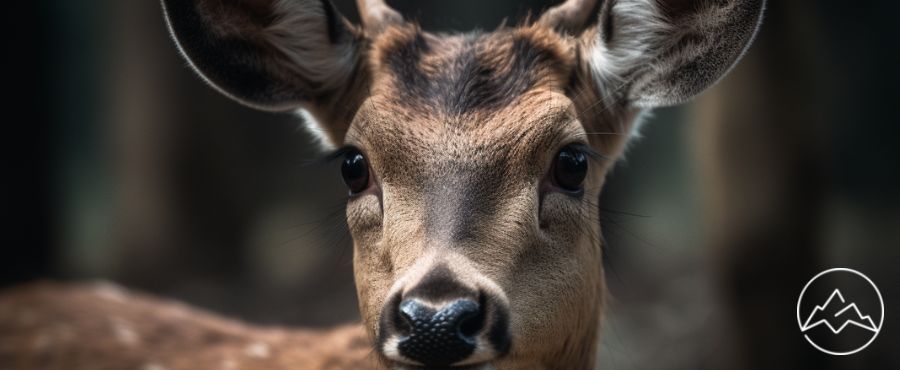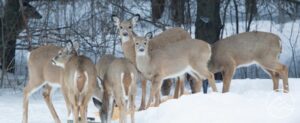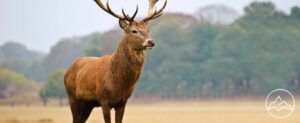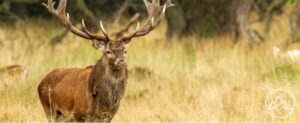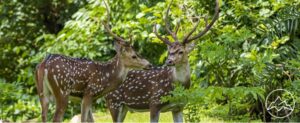The majestic and elusive deer is a symbol of freedom throughout the world. While its grace and beauty are captivating, one of the first things that come to mind when considering this creature is its antlers. But do all deer actually possess antlers?
This article will explore the question in depth, studying the various species of deer to determine if every one of them has antlers.
An examination of different types of deer reveals that not all species have antlers. It is important to understand why some species do not possess them in order to gain a greater appreciation for the complexity of this animal.
By examining the characteristics associated with each type of deer, readers can develop a deeper understanding of this fascinating creature.
Types Of Deer
Deer are a large member of the family Cervidae and are found in many parts of the world.
There are many different types of deer, including caribou, mule deer, and reindeer.
Male deer typically have antlers, which are used for mating and defending territory.
Female reindeer also sometimes grow antlers during their lives.
In contrast, female caribou and mule deer generally do not possess antlers.
The size and shape of antlers vary depending on the species of deer and the age of the male deer.
Antler Anatomy
Interestingly, nearly two-thirds of the world’s deer population is antlered.
Antlers, which are composed primarily of keratin, are shed and regrown each year.
They typically grow from a pair of pedicles located on the skull of males.
Although it is rare, an antlered doe may also occur due to hormonal imbalances or other genetic anomalies.
Male antlers can vary greatly in size and shape depending on the species and age of the animal.
As a result of their complexity and function, antlers have fascinated biologists for centuries.
In some species, they are even used for sexual selection, as males with larger antlers tend to be more successful at mating than their smaller counterparts.
Antlers provide an evolutionary advantage to deer and help them survive in a variety of environments.
Gender Differences
White-tailed deer are a species in which males and females differ in their antler growth. Male white-tailed deer typically start to grow antlers at around the age of one, with full antler growth occurring by the age of three.
Female white-tailed deer, however, do not produce any antlers. This is due to the fact that testosterone levels are much lower in female deer than they are in males, preventing them from producing the necessary hormones for antler growth.
During mating season, male white-tailed deer use their antlers as part of their courtship rituals. This behavior helps them to attract potential mates and also serves as a way to protect themselves from predators.
Female white-tailed deer do not have this advantage but instead rely on other protective behaviors, such as hiding or running away when confronted with danger.
The presence of antlers is thus an important feature in male white-tailed deer that sets them apart from female deer; it plays an essential role in both mating and survival strategies. Although female white-tailed deer do not have the same level of protection provided by antlers as males do, they still possess many other adaptive traits that help them survive in their environment.
Reasons For Antlers
Have you ever wondered why deer have antlers?
Antlers are unique to the deer family, and all species of male deer grow them annually. However, female deer also have antlers in some species. These antlers usually appear during the summer and fall off in winter or early spring.
The purpose of antlers is to establish dominance between males as they compete for mates. Antlers also provide protection against predators and aid with movement through heavy vegetation.
While reindeer are the only species where both sexes grow antlers, members of other species within the deer family also possess them, including white-tailed deer, mule deer, elk, moose, and caribou.
Therefore, it is clear that all species of deer across the globe possess this unique trait.
Antlers And Hunting
Antlers have a major role to play in hunting.
For some species of deer, large antlers are a mark of maturity and strength.
When deer grow their first set of antlers, usually when they are about one year old, the result is called a ‘spike’ or a ‘button buck.’
As the deer matures, its set of antlers increases in size and complexity each year until it reaches its full potential.
This results in larger antlers with more points that can be used as a weapon during hunting season.
While fawns do not typically grow antlers, adult male deer will grow them every year if they have access to the right nutrition and environment.
Therefore, it is safe to say that all male adult deer have antlers.
Frequently Asked Questions
How Do Deer Use Their Antlers?
The majestic antlers of deer are awe-inspiringly strong, capable of slicing through the air with a ferocity that is truly remarkable.
Deer use their antlers for a variety of purposes, from defending themselves against predators to battling other males during the rutting season.
In some cases, they even use them to help scrape away snow and uncover food underneath.
With their strength and agility, deer can perform feats with their antlers that may seem almost superhuman; indeed, it is no wonder that they have captivated the human imagination for centuries.
Do Baby Deer Have Antlers?
Baby deer, or fawns, are born without antlers.
As they mature, however, male deer will begin to grow antlers.
The timing of this growth can vary depending on the species and age of the deer.
Antlers are made of a hardened form of cartilage that is covered in soft velvet while they grow.
They continue to grow until mating season is complete before they are shed and regrow again the following year.
Can Antlers Be Used For Defense?
Antlers, a bony structure found on the heads of some species of animals, including deer, can be used for defense.
The primary purpose of antlers is to assert dominance within a species or group.
Antlers are also used in fights between members of the same species.
As a result, antlers can be effective in warding off predators or fighting off competing males during mating season.
In addition, they provide protection from physical injuries and may have some offensive capabilities when wielded as weapons.
How Long Do Deer Antlers Grow?
The remarkable growth of deer antlers is a marvel to behold. Antler growth takes place annually, usually beginning in the spring and continuing into the summer months.
The antlers typically reach their full size by the end of summer and will remain that size until the following spring, when new growth begins.
The average length of antler growth varies depending on species, but most bucks can grow up to 3 feet in a single year.
In addition to size, antlers also vary in shape and complexity, with some species boasting impressive tines or points and others sporting more simplistic structures.
How Do Antlers Affect A Deer’s Diet?
Antlers have a significant effect on a deer’s diet. Antlers serve as tools for foraging and allow deer to reach otherwise inaccessible vegetation, such as bark and leaves from trees. Additionally, antlers can be used to break into hard-shelled fruits or nuts.
Antlers can also help a deer protect its food source from other animals; this is especially true during the winter when food sources are scarce. As well antlers can help a deer gain access to food sources in water, such as aquatic plants or fish.
In addition to these physical uses of antlers, they also play an important role in communication among deer; large antlers can be intimidating and signal dominance in confrontations with other animals.
Conclusion
Antlers play a vital role in the lives of all deer, and their presence is essential to the species.
Antlers are used for many purposes, including mating, defense, and feeding.
For example, male bucks use their antlers to compete for mates during rutting season.
Additionally, antlers can be used to ward off predators as well as provide access to food that would otherwise be inaccessible due to height.
Furthermore, antlers grow throughout the year and can reach impressive sizes in some species.
In fact, the white-tailed deer’s antlers can grow up to 50 inches wide!
With such impressive dimensions and numerous uses, it is clear why all deer have evolved with this physical trait.
Therefore, it is evident that antlers serve an important purpose for all deer species and will remain a key feature of these majestic animals for generations to come.

